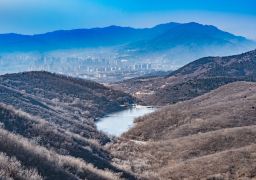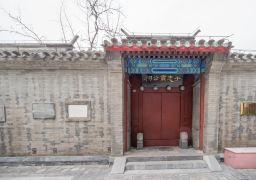Formerly known as Huguo Yongchang Zen Temple, also known as Wanfo Tower. It stands by the Yangtze River and is located in Yingjiang Temple. It was built in the second year of Longqing in the Ming Dynasty (1568 AD). It has a history of more than 400 years and enjoys the reputation of ‘no need to see other towers after passing Anqing’. The tower is a pavilion-style brick and stone structure with seven octagonal floors.
The overall outline is conical. The bottom floor has a wide base, and the tower chambers on each floor are octagonal. Each floor has a cornice and a flat seat. Under the eaves are double-chop Chinese arches with two jumps. The tower spire is composed of an octagonal Xumi seat, a round inverted bowl, a spherical five-tiered wheel and a gourd-shaped vase. Inside the tower are Amitabha Buddha, Maitreya Buddha and the Five Buddhas. The tower body is inlaid with more than 1,000 brick-carved Buddha statues and historical mythological story statues, as well as 54 steles. Every year on the Mid-Autumn Festival on August 15th, when the bright moon hangs high in the sky, suddenly countless tower shadows appear beside the tower shadow in the river. They are colorful and extremely wonderful and miraculous. It is said that this is the gathering of towers on both sides of the Yangtze River in Anqing. It is the grand occasion of the annual ‘pilgrimage’ to Zhenfeng Tower. For this reason, Zhenfeng Tower is also known as the ‘king of towers on the Yangtze River’. For hundreds of years, through wind and rain and vicissitudes of life, ‘the Yangtze River is magnificent every day, and the tower shadow cannot flow away’. When you visit the tower in your leisure time, it is like climbing a cloud ladder or entering a fairyland. The specific opening hours and business status are subject to the opening situation on that day.Zhenfeng Tower
Formerly known as Huguo Yongchang Zen Temple, also known as Wanfo Tower. It stands by the Yangtze Ri[...]









